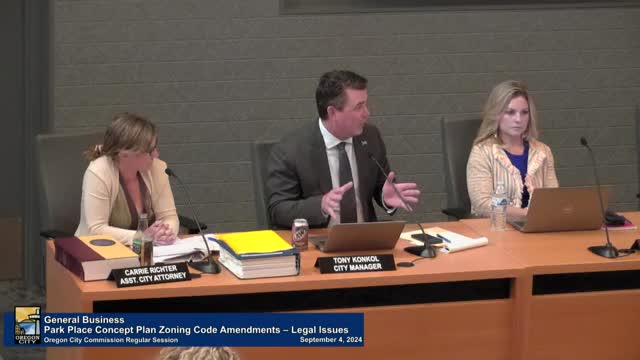City leaders push for urgent infrastructure improvements to support growth
September 13, 2024 | Oregon City, Clackamas County, Oregon
This article was created by AI summarizing key points discussed. AI makes mistakes, so for full details and context, please refer to the video of the full meeting. Please report any errors so we can fix them. Report an error »

In a recent government meeting, officials discussed the complexities of infrastructure development and the financial responsibilities of builders in relation to public improvements. The conversation highlighted the challenges of ensuring proportionality in development costs, particularly when new subdivisions are created.
One key point raised was the obligation of builders to contribute to public improvements before receiving building permits. This requirement aims to ensure that infrastructure, such as roads and sidewalks, is in place to support new housing developments. However, the discussion revealed frustrations regarding the current system, where the burden of these improvements often falls disproportionately on individual homeowners or developers, particularly in cases of infill housing.
Officials noted that while the city has made significant investments in infrastructure, such as the completion of Myers Road, the financial model for these improvements remains a challenge. Developers typically pay System Development Charges (SDCs) but do not reimburse the city for existing infrastructure improvements, leading to concerns about fairness and financial sustainability.
The meeting also touched on potential solutions, including the establishment of reimbursement districts, which would allow developers to recoup costs for infrastructure improvements over time. This approach could alleviate some of the financial pressure on new developments while ensuring that existing properties also contribute to the costs of necessary upgrades.
Moreover, the discussion emphasized the need for proactive measures to secure funding for infrastructure projects, particularly in light of ongoing pressures to develop housing in areas like Park Place. Officials expressed the importance of lobbying for state and federal funds to support these initiatives, suggesting that a more aggressive approach could help address the infrastructure deficits that have historically hampered development.
Overall, the meeting underscored the intricate balance between facilitating development and ensuring that the costs associated with public improvements are equitably distributed among builders and the city. As the community continues to grow, finding effective solutions to these challenges will be crucial for sustainable urban development.
One key point raised was the obligation of builders to contribute to public improvements before receiving building permits. This requirement aims to ensure that infrastructure, such as roads and sidewalks, is in place to support new housing developments. However, the discussion revealed frustrations regarding the current system, where the burden of these improvements often falls disproportionately on individual homeowners or developers, particularly in cases of infill housing.
Officials noted that while the city has made significant investments in infrastructure, such as the completion of Myers Road, the financial model for these improvements remains a challenge. Developers typically pay System Development Charges (SDCs) but do not reimburse the city for existing infrastructure improvements, leading to concerns about fairness and financial sustainability.
The meeting also touched on potential solutions, including the establishment of reimbursement districts, which would allow developers to recoup costs for infrastructure improvements over time. This approach could alleviate some of the financial pressure on new developments while ensuring that existing properties also contribute to the costs of necessary upgrades.
Moreover, the discussion emphasized the need for proactive measures to secure funding for infrastructure projects, particularly in light of ongoing pressures to develop housing in areas like Park Place. Officials expressed the importance of lobbying for state and federal funds to support these initiatives, suggesting that a more aggressive approach could help address the infrastructure deficits that have historically hampered development.
Overall, the meeting underscored the intricate balance between facilitating development and ensuring that the costs associated with public improvements are equitably distributed among builders and the city. As the community continues to grow, finding effective solutions to these challenges will be crucial for sustainable urban development.
View full meeting
This article is based on a recent meeting—watch the full video and explore the complete transcript for deeper insights into the discussion.
View full meeting
